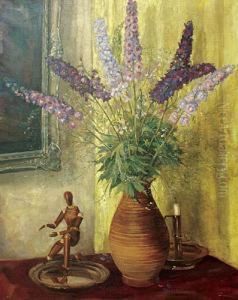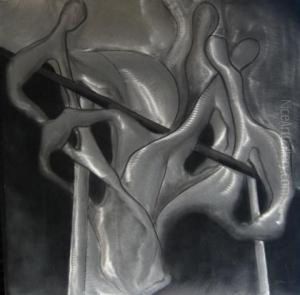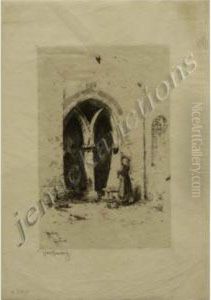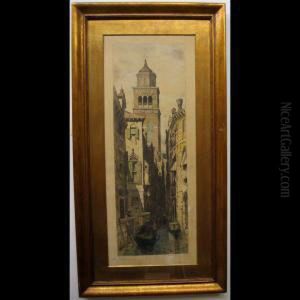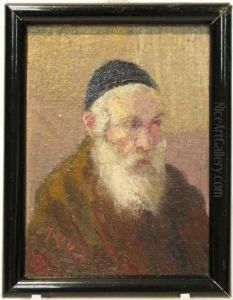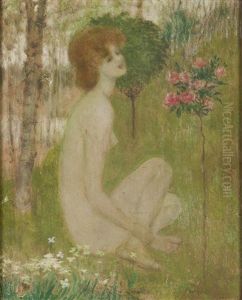Henry Mortikar Rosenberg Paintings
Henry Mortikar Rosenberg was a notable American artist, born in 1858 and passing away in 1947. His life spanned a period of significant change in the world and in the art world specifically. Born just before the American Civil War, Rosenberg grew up in a nation undergoing rapid transformation. Despite the scant early documentation on his education and training, it's evident from his work that he was deeply engaged with the artistic movements of his time, blending traditional techniques with emerging styles.
Rosenberg's artistic output was diverse, including landscape paintings, portraits, and still lifes. He was particularly known for his ability to capture the subtleties of light and shadow, a skill that made his landscapes especially evocative. These works often depicted serene, pastoral scenes that belied the industrialization and social upheavals of his era. His portraits, on the other hand, are notable for their depth of character and psychological insight, suggesting a keen observer of human nature.
Throughout his career, Rosenberg participated in the larger movements of American art, engaging with the Impressionist movement to some extent, though he remained distinctly individual in his style. He was part of a generation of artists who sought to define an American aesthetic, distinct from European traditions, yet his work also reflects a cosmopolitan awareness of global artistic trends.
Despite his contributions to American art, Rosenberg's name is not as well-recognized today as some of his contemporaries. This lack of widespread recognition may be attributed to the changing tastes in art through the 20th century, which saw a shift towards Modernism and Abstract Expressionism, movements that diverged significantly from Rosenberg's more traditional approach.
Rosenberg's legacy is preserved in the collections of American art museums and by art historians who continue to study his work and its place in the narrative of American art history. His paintings remain a testament to a transitional period in American art, bridging the gap between the pastoral idealizations of the 19th century and the more diverse, complex expressions of the 20th century. Henry Mortikar Rosenberg's life and work offer a fascinating glimpse into the evolution of American art and the enduring power of observation and representation.
